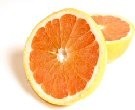Questions over natural preservatives
time soon as the investment necessary to get them accepted by the
authorities could far outweigh potential market success, says
industry insider.
Furthermore, it is far from certain that the natural preservative candidates are as effective as their synthetic counterparts. The development of formulation methods that minimise the need for preservatives, such as reducing the water content, is a more likely response from the natural and organic cosmetics industry to reducing preservative load, explained technical consulting manager for Organic Monitor, Judi Beerling. Approved natural preservatives unlikely Under present EU law a cosmetics manufacturer is obliged to make products safe for consumers but is not required to include a preservative for this end. However, if a manufacturer chooses to include a preservative it must come from an approved list of preservative compounds - the positive list, explained Gerald Renner from Colipa. At present there are no natural or organic preservatives included in this list. Instead there are a number of nature-identical substances that are accepted by certification bodies for use in organic and natural products. Although this means the field is open for a supplier of natural preservatives, the likelihood of companies attempting to get a natural alternative onto the positive list is low, said Beerling. This is, in part, because proving a compound's efficacy and safety could cost millions of euros and take several years, she explained. Are there any contenders? Furthermore, according to Beerling, the jury is still out on some of the leading natural candidates. An example is grapefruit seed extract, which has been championed for its anti-microbial properties and its potential as a natural preservative. However, some have questioned its 'naturalness', as the active component is extracted via a complex, multi-step chemical process. In addition, various laboratory tests have questioned the efficacy of the ingredient, with some studies suggesting that its anti-microbial nature could be due to contamination with synthetic preservatives, said Beerling. No water, no preservative Another method to reduce the need for synthetic preservatives is to change the formulation of products, specifically reducing or removing the water from the product. According to Beerling natural and organic manufacturers are likely to follow this route, designing products in solid or balm form that do not require preservatives. Another common route is to include multifunctional additives in the formulation. These compounds are added to perform another function, such as enhancing the fragrance, and also work to preserve the product. This is a common method of evading the requirement that preservatives must be chosen from the positive list, however Beerling suggests that it is more popular with the smaller companies than the big players. This is because the larger companies feel the pressure to be whiter than white as their products are much more likely to be scrutinised by the authorities, said Beerling. Furthermore it is unclear how long manufacturers will be able to exploit this loophole. Beerling mentioned some industry insiders who felt that manufacturers may not be able to take advantage of this grey area indefinitely, although she herself has no evidence that the authorities are currently clamping down. As the EU authorities can be particularly hot on tightening up ambiguity it is likely that changes may well be made which could significantly effect the organic and naturals market.









